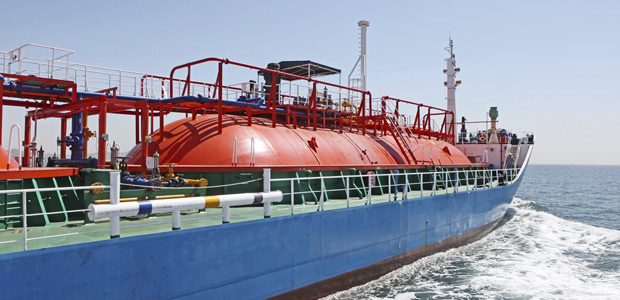
LNG Exports
U.S. LNG Exports Likely To Help Domestic Industries, Study Says
HOUSTON–Increasing U.S. liquefied natural gas exports above 12 billion cubic feet a day would allow the country to continue to provide a competitive advantage for domestic natural gas-intensive industries relative to their overseas counterparts, the Center for Energy Studies at Rice University’s Baker Institute for Public Policy and Oxford Economics says.
According to The Macroeconomic Impact of Increasing U.S. LNG Exports, LNG exports are associated with a net increase in domestic gas production. The study indicates the majority of the increase in LNG exports is accommodated by expanded domestic production rather than reductions in domestic demand, a result it says reflects the very elastic long-run supply curve in North America.
As exports increase, the spread between U.S. domestic prices and international benchmarks narrows, the Center for Energy Studies concludes. In every case, it points out, greater LNG exports increase domestic prices somewhat and lower prices internationally. The study notes most price movements, in absolute terms, occur in Asia.
The overall macroeconomic impacts of higher LNG exports are marginally positive, a result that is robust under alternative assumptions, the study says. With external demand for U.S. LNG exports at 20 Bcf/d, the impact of increasing exports from 12 Bcf/d is between $7 billion and $20 billion annually from 2026 to 2040 in today’s prices, it indicates.
“The dramatic growth in shale gas production in the United States has presented a number of opportunities and challenges for the U.S. economy,” comments Kenneth Medlock, senior director for the Center for Energy Studies. “Shale gas production has lowered the domestic price of natural gas so that the United States now has among the lowest prices in the world, and has shifted the United States from emerging as a significant importer to a pending LNG exporter. This has benefitted consumers and led to gains in competitiveness for U.S. manufacturers.”
Low domestic gas prices negatively impact U.S. upstream profitability, which has been a primary driver of interest in exporting LNG as suppliers seek new demand in higher-priced markets, Medlock says.
“While selling natural gas at higher prices on the world market would increase profits for U.S. gas producers, the price gap between the United States and the rest of the world would shrink, thereby eroding some of the benefits that have accrued to U.S. consumers and manufactures,” he says. “So, the net balance of the gains and losses associated with trade are at the core of the analysis. In sum, the balance is positive for the U.S. economy.”
Alternative Futures
The report uses the Rice World Gas Trade Model to simulate alternative futures to assess natural gas production, demand, and more generally, the international gas market based on a range of projections of U.S. resource endowments, the Center for Energy Study says.
The analysis developed a comprehensive set of scenarios, including U.S. gas recovery, international and domestic demand, and natural gas supply opportunities in the rest of the world, to examine the impacts on energy markets and the U.S. macroeconomy, the center says.
Medlock points out that the impact from LNG exports will not be felt until after 2025 because of the large amount of LNG supply that is coming on line globally in the next few years. The global market cannot accommodate U.S. gas volumes greater than 12 Bcf/d before 2025 in any of the scenarios considered, he says.
Accordingly, Medlock predicts that although international gas demand will continue to increase, the market first must work through the large amount of LNG available before turning to U.S.-sourced LNG.
The study’s reference case forecasts U.S. LNG exports of 6.5 Bcf/d in the face of abundant and competitive resources available globally. More U.S. LNG exports require a range of factors that limit the otherwise competitive natural gas production outside the United States, and moreover, the study states, those factors must become increasingly restrictive to increase domestic LNG exports above 12 Bcf/d.
Across all the scenarios assessed, “The macroeconomic impacts of LNG exports are marginally positive,” Medlock says. “Across the domestic cases, the positive impact of higher U.S. gas production exceeds the negative impacts of higher natural gas prices associated with increased LNG exports. The overall macroeconomic impacts of increasing U.S. LNG exports to 20 Bcf/d from 12 Bcf/d are small, reflecting the small size of the natural gas sector and supporting industries relative to the more than $13 trillion U.S. economy.”
For other great articles about exploration, drilling, completions and production, subscribe to The American Oil & Gas Reporter and bookmark www.aogr.com.














